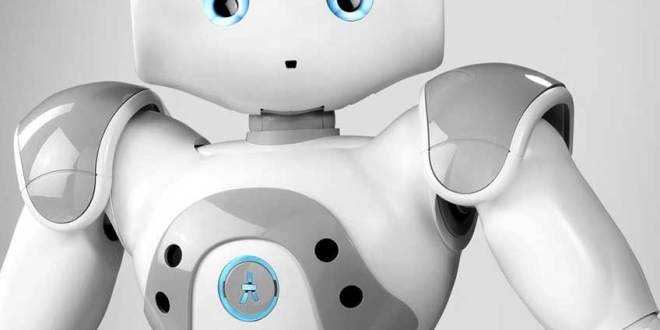The science of robotics is frequently considered to fall into the engineering field, a problem having to do more with moving parts than artificial intelligence. Many of the simple robots that are manufactured today are little more than mechanical machines, performing simple tasks such as assembly line work. The programs that accompany these simple machines are hardly what one would consider to be intelligent behavior, but as technology expands, the line between science fiction and fact begins to blur. Almost any robotic concept found in a movie or book has some place in modern robotic development. More powerful methods to program robots are allowing them to perform more complex tasks. Robots are also increasingly moving towards human-like interfaces as they have their own emotional expressions and body language. This merging of robotics and advanced AI programming is being seen by many as an important step to developing a machine with human capabilities.
Robotic Engineering and AI
Engineers are recognizing that robots do not need to be hard-wired with strict algorithms in order to control their movement and other motor skills. A properly designed neural network allows the robot to learn on its own and has the potential to create less work for the engineers in the long run. This adaptive capability is invaluable as environments that robots will have to exist and operate in are constantly changing; this will make the robot more useful in a variety of applications.
Currently engineers are looking at separating the various processing elements of a robot the same way that human beings might. Lower-level functions and higher-level functions would be separated and relegated to different programming and hardware. If this system is connected by a NN that controls the whole package, then what emerges is a multi-layered system of thought similar to the autonomous processes the humans use to interact with their own environment.
Robotics and Artificial Intelligence Learning
As previously discussed, there are many who believe that the only way to develop a proper strong AI is to have a machine that is able to interface with the world through sensory input and physical interaction. By experiencing failures and successes, a robot with a complex enough mind will begin to find the patterns in its environment and adjust to them. Already, programs are able to use a combination of sensors and adaptive programming to deal with common motor skill issues such as navigation, spatial perception, and visual and audio recognition. Eventually this may come to encompass a sense of danger recognition and, subsequently, create a robot with self-preservation abilities.
Increased emphasis is beginning to be put on developing skills for interaction with other beings as well, leading to the possibility of advanced capabilities in the social realm. Through the use of common sensory inputs such as eyes and ears, a robot will be able to recognize people’s faces and voices; tell how they feel from the inflections in their voice, body language and facial expressions; and respond in the appropriate manner. Human interaction with robots on a social level may be one more step towards bring artificial intelligence into being.
Criticisms of Using ANN in Robotics
One of the main problems with using neural networks in the control of robotics is that they require a large amount of training to be able to function properly in the real world. ANNs are essentially dumb creatures and cannot perform a wide enough variety of functions to be practical in robotics. The problem lies in the massive amount of storage and processing power that is required to enable the robot to perform the various tasks needed. This problem can be solved by the advancement of hardware technology, but for now it remains a large obstacle.
The Future of Robotics?
Robotic advancement has the potential to be useful in a variety of both practical and social situations. Their non-organic bodies allow robots to manipulate materials and work in environments, such as those related to space exploration, that would be dangerous to unprotected humans. Robots have already been sent to Mars in order to relay data back to Earth. Socially, robots with expertly mimicked human qualities would make excellent teaching tools as well as companions (of both the human and pet variety). Once brain-to-computer interfaces are perfected, a person could easily manipulate an artificial body at range, enabling them to go about tasks without endangering their real bodies.
Robots are Our Friends
Ironically, interaction with robots is being used to study the workings of human interactions in social situations. Though this may seem a rather minor bit of research, what it says for robots is that people are often more comfortable interacting with robots than they are with their own kind. Robots, at least in the form they take now, are seen as mostly harmless by people. There are neither the risks of rejection nor the stress that can occur if a person is forced to interact with someone they do not wish to. If a person gets uncomfortable with a robot, he can simply turn it off or walk away without any feelings of guilt or obligation. Robots act as a form of surrogate social interaction in a world where humanism is shifting more to the impersonal level and the fear of other human beings is reinforced daily in popular media. This offers an alternative for those who desire interaction on a safe level, particularly those who have psychological problems which make socialization difficult. One day robots may even make the best psychiatrists, allowing people to open up to an examining machine that acts like a human but has none of the flaws that make humans untrustworthy.
Some Developments in Robotics
Here are a few videos that show what some of the leading experts in the field of robotics are developing in the present as well as what they are looking towards for the future.
- David Hanson shows how machines are becoming more interactive in order to communicate and socialize with human beings on their own level.
- Cynthia Breazeal demonstrates social robots as a means to provide connection and positive reinforcement in people’s lives.
- Hod Lipson shows some examples of the way robots are using learning programs, such as artificial neural networks, to develop their capabilities through trial and error.
 Mind Gem
Mind Gem

